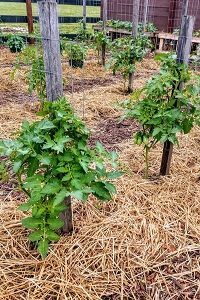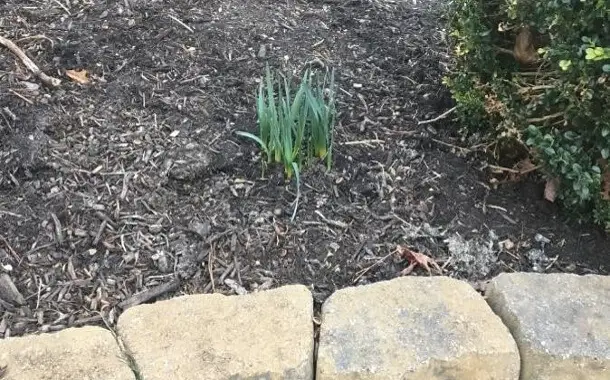Cost to Weed and Mulch Flower Beds
Mulching is a layer that is placed above the soil, with a number of benefits: it reduces evaporation, prevents weeds from growing, isolates the plants, and last but not least, a soil with a light structure, rich in nutrients is obtained. Basically, mulching follows the pattern of nature, the forest being the best example in this regard. The leaves that fall every fall maintain a permanent vegetal blanket on the surface of the soil, called a litter, which forms a natural mulch.
We can easily copy the pattern of nature in our garden, covering the layers of the garden with various organic matter, such as straw, leaves, plant debris, tree bark, chopped branches, grass that you mow.
How Much Does it Cost to Hire a Landscaper to Weed and Mulch My Flower Beds?
The amount of money you are going to spend on hiring a professional to mulch and weed your flower beds will be influenced by the size of the flower beds, obviously, the company you hire, and the amount of weed. For a mid-size yard, you should plan on spending anywhere between $310 and $1,100 if you want to hire a landscaping company. Budget on the higher end if you have a large number of flower beds that need significant mulch. On the other hand, if you have only a few flower beds that need a small amount of mulch then you should budget on the low end.
You might also like our articles about the cost of a boxwood shrub, leveling a yard, or removing brush.
In general, independent landscapers and handymen charge by the hour for mulching and weeding. These rates are variable and depend on the person and the geographical location. Though, in general, you should expect to pay anywhere between $35 and $55 per hour. It is recommended to ask about the amount of time needed to perform this job before hiring a professional, so you will not be surprised when you will see the bill. However, you should understand that you can only get an estimate and nobody will tell you exactly how long the job will take. Also, consider hiring a professional with experience in this field as these are more efficient.
Weeding and mulching details
Soil mulching is the procedure of covering the soil with a specific mixture, organic in nature (straw, leaves, sawdust, plant debris) or inorganic (polyethylene foil, gravel, glass, recyclable materials). It has many advantages and is a useful method in both vegetable gardens and flower beds. It can be used regardless of the cultivated area.
Mulching is considered the most effective and simplest solution to create a plant-friendly environment. This technique is a natural alternative to chemical treatments, contributing to soil health. Moreover, it reduces the amount of work required to care for plants, regardless of their type.
Types of mulch
There are two types of mulch: organic and inorganic. These are made of natural or synthetic materials, the most used of them being:
- bark (most often, resinous);
- sawdust;
- straw;
- dried leaves;
- pine or fir needles;
- compost;
- river gravel or crushed rock of uniform size;
- crushed glass;
- plastic foil, which may be black, gray, transparent, or double-sided, one reflective silver and one black.
The mulch can be a mixture of natural or synthetic materials. For efficiency, they (except plastic wrap) are ground and homogenized. The two types of mulch, organic and inorganic, can be used separately or in various combinations, depending on your needs.
Important things to consider
 The best times for mulching are late spring and early autumn. Because mulch has the ability to reduce soil temperature variations, applying it in early spring delays the process of warming the soil, thus postponing the beginning of the gardening season.
The best times for mulching are late spring and early autumn. Because mulch has the ability to reduce soil temperature variations, applying it in early spring delays the process of warming the soil, thus postponing the beginning of the gardening season.
Mulch is the easiest and most cost-effective way to improve your home landscape. Used mainly in flower beds, mulch can make your home more attractive and improve soil and plant health. There are different types and colors of mulch, which means that this project will give you the opportunity to be creative with the exterior decor of your home.
Most unpainted organic mulch will change color to gray in about 1 year depending on how much sunlight hits it. However, to accentuate the colors of your plants and flowers, buy regularly colored organic mulch. It is processed with environmentally friendly vegetable paints in a wide range of colors. Expect the color to last two or three years.
The mulch made of compost is the most nutritious, but it is also the one that disappears the fastest. Compost is similar to soil; it is black and very rich in organic nutrients.
How do you choose the right mulch?
Vegetable mulch, be it leaves, bark, wood chips, or even compost made by you, is great to be applied directly to the ground and nature must be allowed to do its job. Over time, this mulch will be incorporated into the soil and will make it much looser and richer.
You should know, however, that mulch from obsolete organic matter or compost is preferable to use on flower beds or vegetable beds, where plants need to grow and produce fruit, and the soil should be rich in nutrients. Where the image is more important than productivity, use mulch from tree bark or wood chips. It will also be decomposed in the end, but slower, and in the meantime, it ensures a very good weed control and a special, neat appearance.
Stone or gravel mulch is very good in areas with a lot of moisture or places affected by rainwater, such as drainage areas.
Does mulch remove weeds forever?
Not. Vegetable mulch should be applied in a suitable layer, first of all, and over a weeded and plowed ground. Thus, weeds are very unlikely to appear in the period immediately after application.
The stone must be applied over a water-permeable foil, otherwise, weeds will soon make their way through the stones.


Leave a Reply
Want to join the discussion?Feel free to contribute!